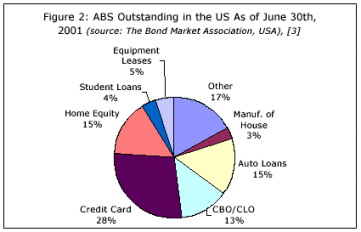|
Previous
Part - III
Securitization can help Indian borrowers with international assets in piercing the sovereign rating and placing an investment grade structure. An example, albeit failed, is that of Air India’s aborted attempt to securitize its North American ticket receivables. Such structured transactions can help premier corporates to obtain a superior pricing than a borrowing based on their non-investment grade corporate rating.
A market for Mortgage backed Securities (MBS) in India can help large Indian housing finance companies (HFCs) in churning their portfolios and focus on what they know best - fresh asset origination. Indian HFCs have traditionally relied on bond finance and loans from the National Housing Bank (NHB). MBS can provide a vital source of funds for the HFCs.
After the merger of India’s largest financial institution ICICI with ICICI Bank, ICICI, faced with SLR and other requirements, is actively seeking to launch a CLO to reduce its overall asset exposure [6]. It appears to be only a matter of time before other Public Financial Institutions merge with other banks. Such mergers would result in the need for more CDOs in the foreseeable future.
Current Securitization activity in India
To analyze the potential of securitization India, we split the securitization market into the following four broad areas: -
Asset Backed Securities (ABS)
Asset backed Securities are the most general class of securitization transactions. The asset in question could vary from Auto Loan/Lease/Hire Purchase, Credit Card, Consumer Loan, student loan, healthcare receivables and ticket receivables to even future asset receivables. The split of outstanding ABS in the US is given in Figure 2.

Next
Written by V. Sridhar, PGP 2002, IIM Calcutta.
Contributed by Varun Goenka, Diploma in Business Finance Economics, ICFAI.
|